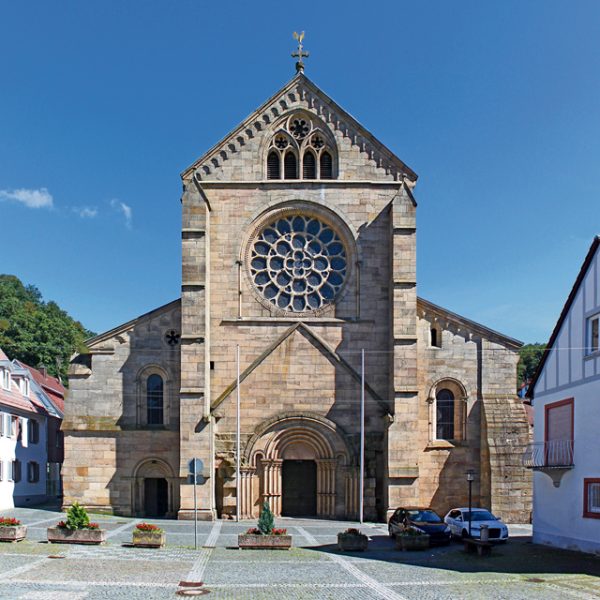
If you’ve ever driven through Otterberg you’re sure to have noticed the beautiful semi-timbered buildings on the main street, but have you ever asked yourself why there is a colossal church in such a small town? You may have also wondered about the sign “Wallonenstadt Otterberg” for a town of roughly 6,000 inhabitants, indicating its status as a city.
Otterberg has an eventful history and in the year 1145 the Cistercians (a Catholic order of monks) founded an abbey in Otterberg. The Cistercians preferred building in river valleys or in swampy areas, and as a sign of their humility and purity they began with the construction of the monastery at the Otterbach (stream).
The large monastic church, formerly part of the Cistercian monastery, was built between 1168 and 1254. The church is the most prominent landmark and is the largest sacral building in its original form in the State of Rheinland-Pfalz. It is only a few square meters smaller than the cathedral in Speyer, which had to be restored after it was damaged on several different occasions.
After a few centuries of monastery life in Otterberg, the church was abandoned and slowly left to decay after the Protestant Reformation in the 16th century.
In the year 1579 Palatinate Count Johann Casimir allowed religious refugees from the Spanish Netherlands, exiled Calvinists referred to as Walloons, to settle on the premises of the abandoned monastery. In a decree he defined that certain parts of the monastery complex could be used to build new houses, while other sections were preserved such as the church, the chapter house, and the abbey house.
Initially 400 individuals were settled in the refugee encampment, but the industrious community quickly grew and only two years later, in 1581, Otterberg was granted city rights with a population of 1,600 and still holds these rights today.
The Walloons, mainly from the French speaking part of Belgium, were proficient cloth makers and tanners, blacksmiths, carpenters and skilled craftsmen. Many buildings in the historic district were built by these skilled workers, such as the oldest house, the Ferkelsche Haus, which was built in 1606, the Alte Apotheke (pharmacy), which was built in 1608, and the Blaues Haus, which was built in 1612.
Edifices built in the 17th and 18th centuries can still be found on the main street today with the Walloons and their craftsmanship playing a significant role in shaping the character of Otterberg. The square in front of the church features a granite sculpture of historic life and times in the city and the neighboring Altstadt is great for strolling and dipping into the age of the Walloons.
Did you know that in 1708 joint use of the church by Protestants and Catholics led to problems? The solution was to install a wall inside the church leading to services being offered in the transept for the Catholics and in the nave for the Protestants. In 1979 the wall was removed, and the church is now shared by both denominations. There is a fragrant herb garden behind the church, opened for visitors on weekends during the summer. Its smaller sister church, also built by the Cistercians, is the Klosterkirche to be found in nearby Enkenbach.
The church offers grandiose classic concert throughout the seasons. The city also offers virtual tours into the life and times of the monastery and the Walloons, such as in English on June 4.
For information, visit https://www.otterbach-otterberg.de/tourismus-freizeit/gaestefuehrungen/time-travel/







